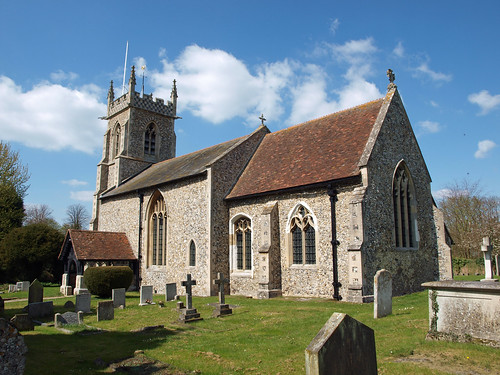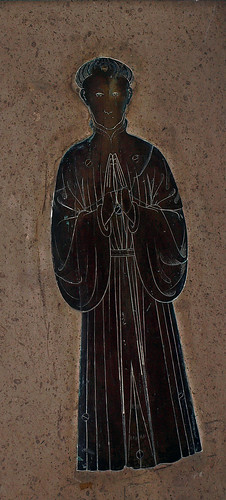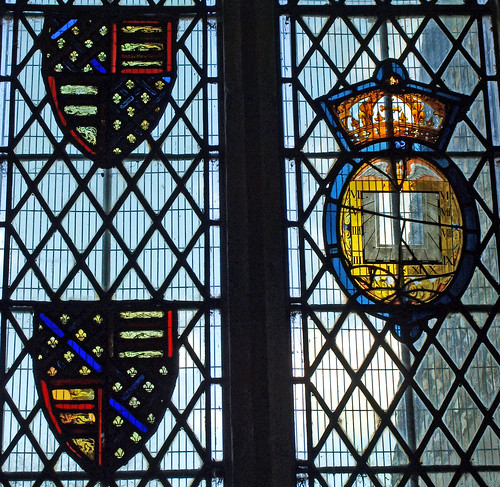St Mary is a perfectly average, restored Essex church pleasantly situated in the heart of the pretty village of Widdington. It has some old glass, a rather nice brass and some monuments, all in all run of the mill but pleasant enough.
ST MARY. Nave and chancel, and W tower of 1771, rebuilt in 1872. Of the same time the large imitation Perp windows on the N and S sides. The E window however and the chancel S window are original early C14 work. Inside one notices an earlier history of the chancel. There is one Norman N window and there is the surround of the Dec S window which is of c. 1260, with shafts, much dog tooth decoration and good stiff-leaf capitals. - SCREEN. By Sir Guy Dawber, 1907. By the same WAR MEMORIAL, a simple oval tablet with good lettering. - STAINED GLASS. Sundial dated 1664 in a N window. - PLATE. Cup of 1562 with two bands of ornament; Paten and Almsdish probably late C17. - BRASS to a Civilian, feet missing, C14.
WIDDINGTON. A small village with a pleasant green near the source of Cambridge’s river, its oldest possession is a Norman window in the church, opening to a 15th century vestry. The church has been much restored, and its tower has been rebuilt with bold gargoyles and handsome pinnacles, but it has kept treasures from all the great centuries. Behind the altar is a 14th century window with fine carving about it, a grotesque head with foliage coming from its mouth and a bird eating fruit. Another window has the shields of France and England in 14th century glass, and a medallion of 1664 showing a sundial and an hourglass. There is a piscina 700 years old, and a brass portrait of a civilian who lived before America was on the map. The oak doors and their ironwork in the porch are notable, and are said to be 15th century.
Widdington Hall not far away is now a farm, and goes back to the 15th century. Beside it is a Tudor barn; but an even finer barn belongs to Prior’s Hall, a farmhouse whose stone walls behind the plaster are believed to be almost as old as Magna Carta. The barn has eight bays, side aisles, and gables with foiled bargeboards.
Flickr set.



No comments:
Post a Comment